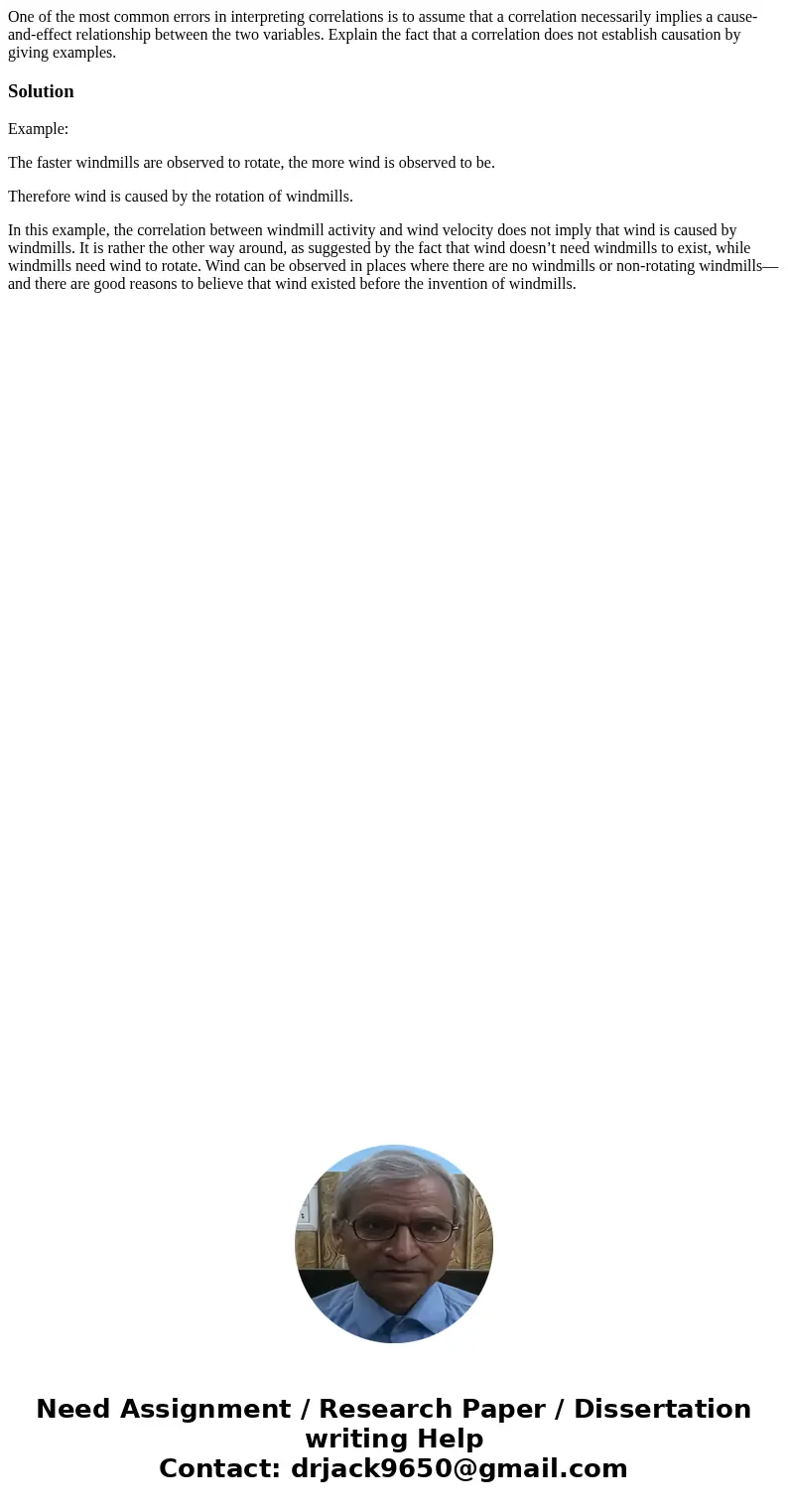One of the most common errors in interpreting correlations i
One of the most common errors in interpreting correlations is to assume that a correlation necessarily implies a cause-and-effect relationship between the two variables. Explain the fact that a correlation does not establish causation by giving examples.
Solution
Example:
The faster windmills are observed to rotate, the more wind is observed to be.
Therefore wind is caused by the rotation of windmills.
In this example, the correlation between windmill activity and wind velocity does not imply that wind is caused by windmills. It is rather the other way around, as suggested by the fact that wind doesn’t need windmills to exist, while windmills need wind to rotate. Wind can be observed in places where there are no windmills or non-rotating windmills—and there are good reasons to believe that wind existed before the invention of windmills.

 Homework Sourse
Homework Sourse